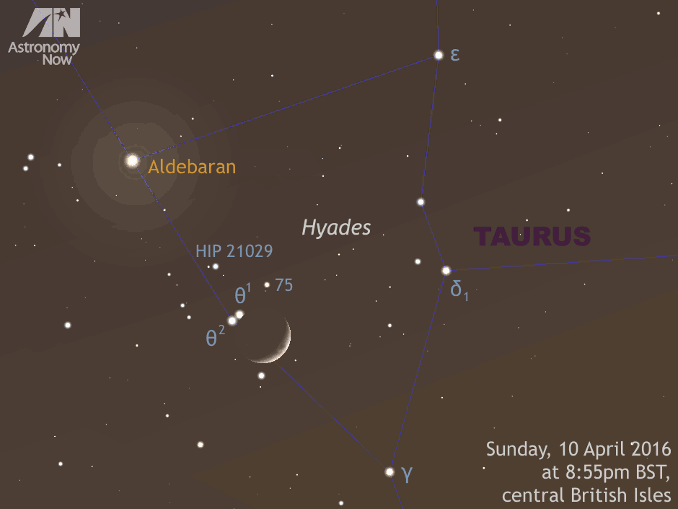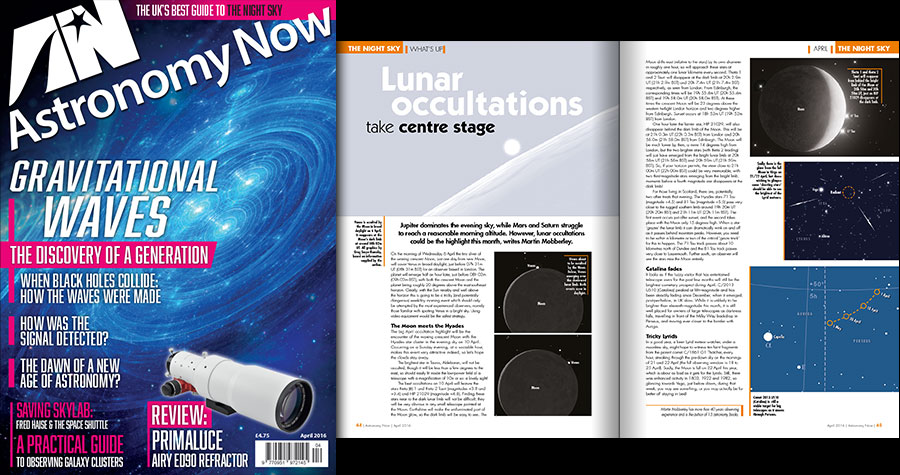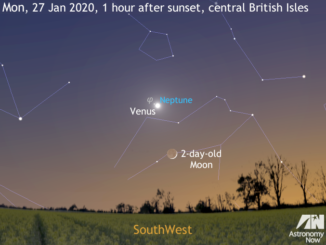
The brightest stars covered by the Moon on this evening are magnitude +3.8 theta1 (θ1) Tauri, magnitude +3.4 theta2 (θ2) Tauri and magnitude +4.8 HIP 21029. As seen from London, the BST times at which these stars disappear behind the Moon’s advancing dark limb are 9:02pm (θ1), 9:07pm (θ2) and 10:00pm (HIP 21029). As seen from Edinburgh, the corresponding BST times are 8:55pm (θ1), 8:58pm (θ2) and 9:58pm (HIP 21029).
The usual advice for observing occultations applies inasmuch as you should be ready with your binocular or telescope a few minutes before the appointed time(s) so as not to miss out. Plus, it’s always fun to see the Moon’s orbital motion carry it ever closer to the target star until it is instantly snuffed out.
By 11:30pm on Sunday night, when the Moon is just four degrees high in the west-northwest for the centre of the UK, the 17 percent illuminated lunar crescent lies just 0.7 degrees below Aldebaran, the first-magnitude star that is the brightest in the constellation of Taurus. As the Moon sets in the British Isles, the separation of the pair will be just half a degree, or one lunar diameter.
Inside the magazine
Find out all you need to know about observing the Moon and occultations in the April 2016 edition of Astronomy Now, the UK’s biggest monthly astronomy magazine.
Never miss an issue by subscribing to the UK’s biggest astronomy magazine. Also available for iPad/iPhone and Android devices.




